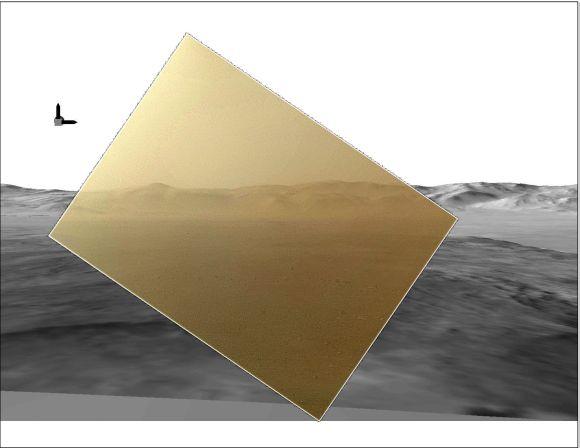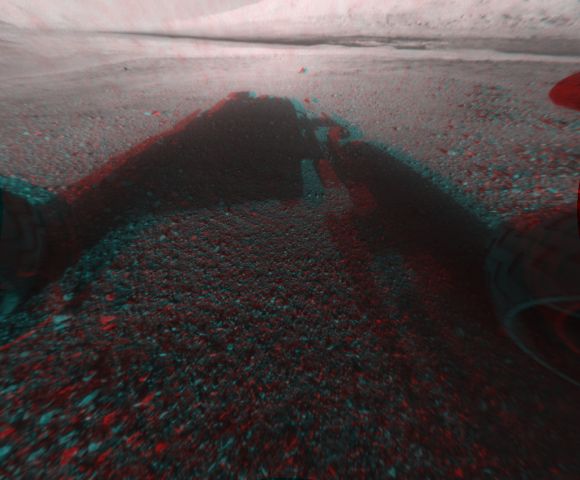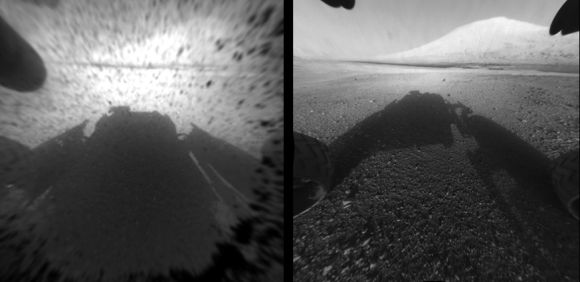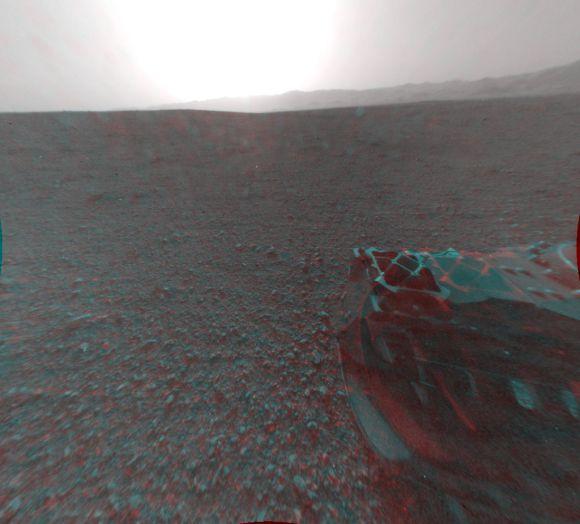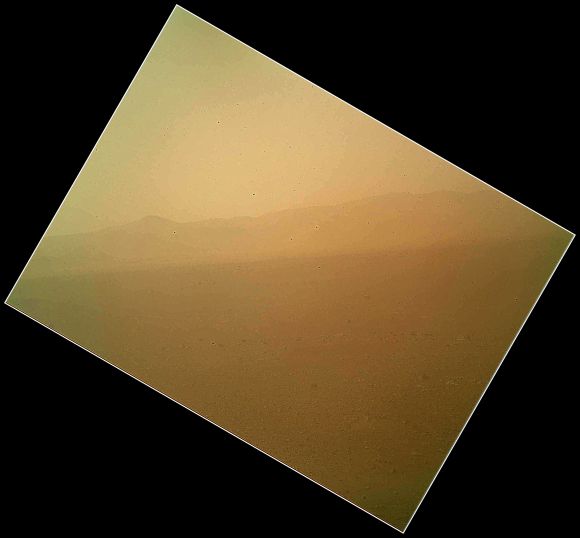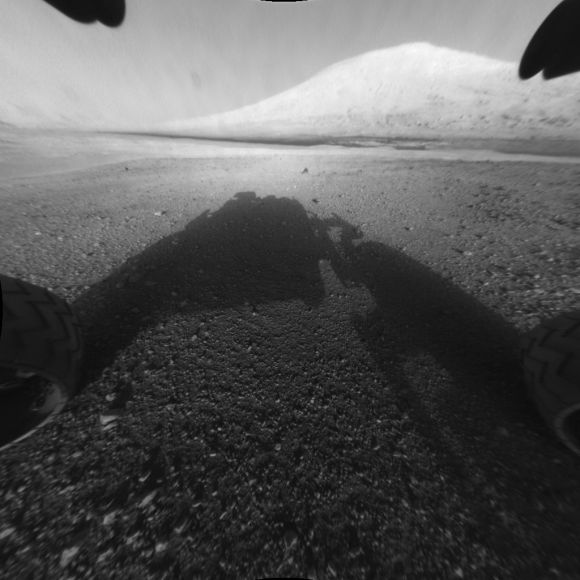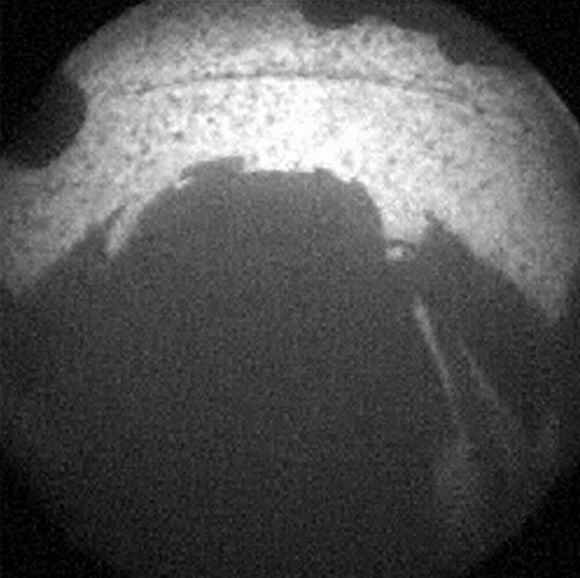 | « Back to article | Print this article |
MUST SEE! Curiosity beams new photos of MARS
NASA's newly landed Mars science rover Curiosity snapped the first colour image of its surroundings while an orbiting sister probe photographed litter left behind during the rover's daring do-or-die descent to the surface, scientists said Tuesday, Reuters reported.
Curiosity's colour image, taken with a dust cover still on the camera lens, shows the north wall and rim of Gale Crater, a vast basin where the nuclear-powered, six-wheeled rover touched down Sunday night after flying through space for more than eight months.
Please click NEXT to read further...
MUST SEE! Curiosity beams new photos of MARS
The picture proved that one of the rover's key instruments, a camera known as the Mars Hand Lens Imager, or MAHLI, was in good working order affixed to the end of Curiosity robot arm, the report stated.
The latest images were relayed to Earth during the rover's first full day on Mars, following a descent through the Martian atmosphere and touchdown on Sunday night.
MUST SEE! Curiosity beams new photos of MARS
The $ 2.5 billion spacecraft is the largest and most advanced ever sent to another planet. The car-size, one-tonne rover's descent-stage retrorockets fired, guiding it in a "sky crane" manoeuvre to the surface of the Mars.
Curiosity is expected to revolutionise the understanding of Mars, gathering evidence that Mars is or was capable of fostering life, probably in microbial form.
MUST SEE! Curiosity beams new photos of MARS
The spacecraft is also expected to pave the way for important leaps in deep-space exploration, including bringing Martian rock or soil back to Earth for detailed analysis and, eventually, human exploration.
Scientists have found signs of water on the red planet, though it is now a dry place with a thin atmosphere, extreme winters and dust storms.
MUST SEE! Curiosity beams new photos of MARS
Curiosity is not equipped to search for living or fossil microorganisms but it will look for basic ingredients essential for life, including carbon, nitrogen, phosphorous, sulphur and oxygen.
Curiosity traveled nearly 570 million kilometers since it was launched in November.
MUST SEE! Curiosity beams new photos of MARS
Curiosity returned its first view of Mars, a wide-angle scene of rocky ground near the front of the rover.
More images are anticipated in the next several days as the mission blends observations of the landing site with activities to configure the rover for work and check the performance of its instruments and mechanisms.
MUST SEE! Curiosity beams new photos of MARS
NASA will spend the first month checking out Curiosity. The first drive could occur early in September. The rover would not scoop its first sample of Martian soil until mid-September at the earliest, and the first drilling into rock would occur in October or November.
Because Curiosity is powered by electricity generated from the heat of a chunk of plutonium, it could continue operating for years, perhaps decades, in exploring the 96-mile-wide crater where it has landed.
TOP photo features of the week
Click on MORE to see another set of PHOTO features...
